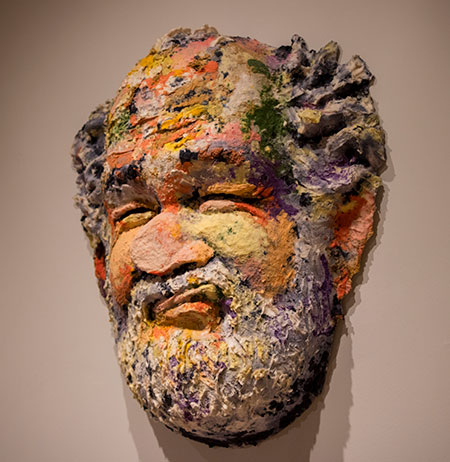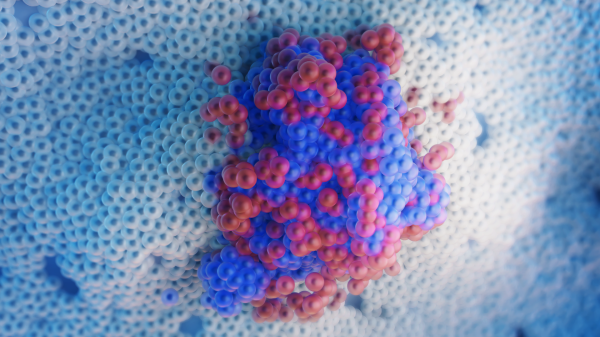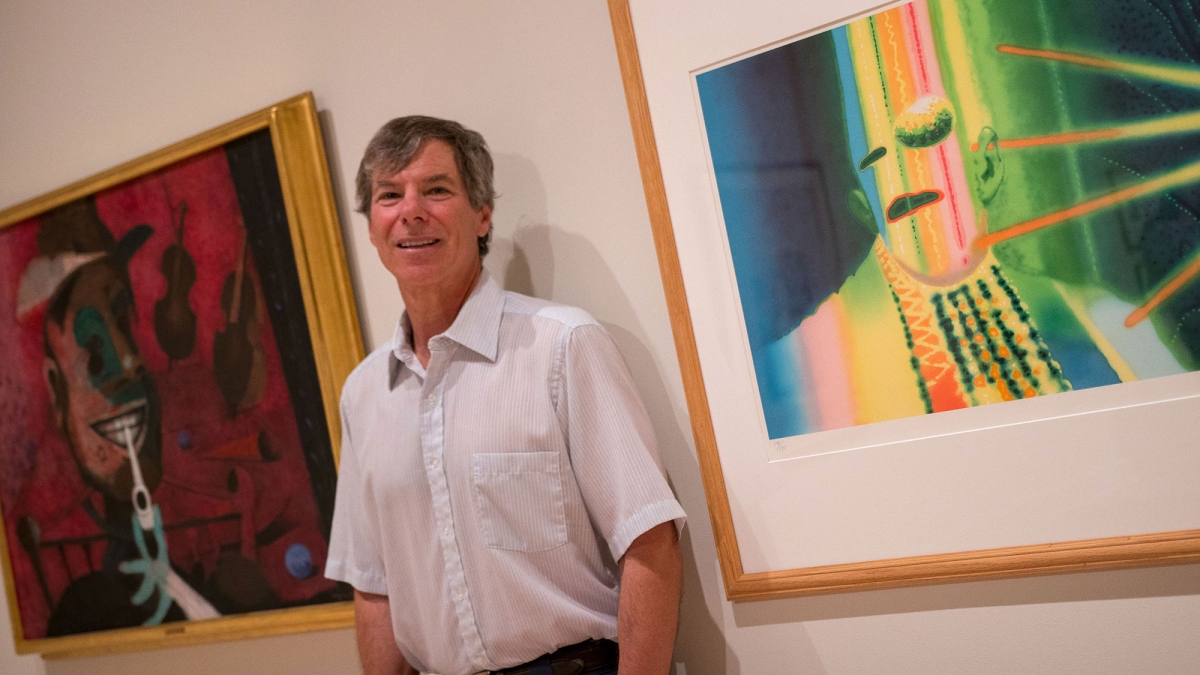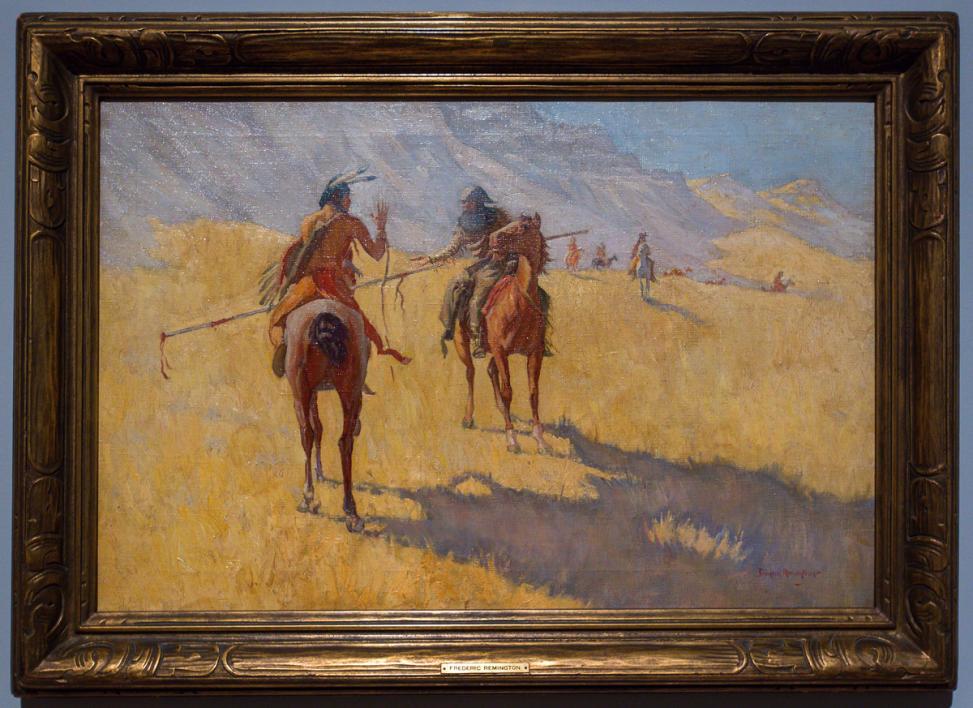Artists and scientists are not such strangers as one might think. An overarching curiosity drives both.
Arizona State University engineer Nathan Newman sees in his fellow scientists — and in many of his students — “an unbridled passion that dominates their life, just like the desire to create imagery that I find among artists.”
Newman himself has traversed both realms, contributing his expertise in physics and materials science to the art world over the years. His latest foray is as guest curator of an ASU Art Museum exhibit designed to explore how a scientific eye can illuminate aspects behind the creation of various works in the museum’s collection and the visual effects that enhance their aesthetic appeal.
“I like being around artists because they have the same appetite to create art as I do to understand science and the world around us,” said Newman, the Lamonte H. Lawrence Professor in Solid State Science in the Ira A. Fulton Schools of Engineering.
Titled “Material Beauty,” the exhibit focuses on artworks that examine:
• The connections between chemistry and the ways the human brain discerns color. This involves wavelengths of light and energy absorption, along with the interplay of oscillating electrons and positive ions, among other things happening at the atomic level.
• Explanations of how neurological factors and certain brain functions play a role in our facial recognition ability — or the lack of it — and how these things shape the work of artist Chuck Close, whose work is in the museum’s collection.
• The “mathematics of geometric perspective” and how it allows two-dimensional paintings and drawings to depict three-dimensional images, enabling them to replicate the way the human eye visualizes the natural world within its sight horizon.

Works in the exhibit provide examples of the ways in which artists’ images reflect how human neurological factors and geometric perspective can shape our visual experience of objects. Photo by Marco-Alexis Chaira/ASU
“The show is part of our ‘Encounter’ series, for which we invite outsiders to put their own spin on our collection,” said Brittany Corrales, curatorial coordinator at ASU Art Museum and co-organizer of the exhibition.
“We invited Nate to be a curator because he has a curiosity about artists and art materials and offers the unique perspective of an expert on physics and materials science.
“The collaboration is a great way to welcome new audiences from science-based disciplines into the museum space to engage with art.”
A frequent arts collaborator
It’s not Newman’s first time offering a scientific expertise to the art world.
A few years ago, he performed scientific analysis to aid an investigation that determined a painting owned by the ASU Art Museum titled “The Pioneer and Indian,” purported to be an original by American artist Frederic Remington, was in fact a forgery.
The detective work for the Danish artist collective SUPERFLEX included producing infrared images to reveal graphite underdrawings on the “The Pioneer and Indian” painting’s canvas and teaming with Dana Tepper, the museum’s chief conservator, to analyze the materials used in the painting at the atomic and microscopic levels.
In 2016, Newman and Fulton Schools Assistant Research Professor Shery Chang at the LeRoy Eyring Center for Solid State Science collaborated with two artists from Argentina — Guillermo Faivovich and Nicolás Goldberg — for research on small fragments of the 4,000-year-old Campo del Cielo meteorites.
Employing petrographic electron microscopy and microphotography, they produced ultrahigh-magnification images to observe the atoms in the iron that made up the meteorites, capturing images of their brilliant silicate inclusions — which are solids, gases or liquids enclosed within the mass of a mineral.
Newman's scientific analysis helped reveal that "Pioneer and the Indian" was in fact not an original by American artist Frederic Remington. Photo by Charlie Leight/ASU Now
The images that came out of this research have since become part of exhibits in a number of shows at reputable museums and galleries.
“I’m pleased that I played a small contributing role in that,” Newman said.
All in the family
Newman’s entry in the arts community comes by way of his wife, Penny, who is a figurative oil painter. She is the reason, he said, “I spend almost all of my vacations in art museums.”
He met the director and staff members of the ASU Art Museum through his wife’s fundraising efforts there. That led to the investigation of the forged painting and the research on the meteorites, and eventually to the invitation to be a guest curator.
Newman decided to take on the curator role because he thought it would be fun.
“I also thought that my wife would either get involved or at least be impressed,” Newman said. “She did not get involved, nor can I tell whether she is impressed.”
He adds: “I do know that she is befuddled that I have been involved in the creation of some very well received exhibits without any formal training in art. I must be a natural at this or a very good fake.”
‘Material Beauty: Encounter with Nathan Newman’
What: Artworks chosen by ASU engineer Nathan Newman that engage with the chemistry of color, the neurology of facial recognition and the mathematics of perspective.
When: 11 a.m.-5 p.m. Tuesdays-Saturdays, till 8 p.m. Thursdays. Through Dec. 9.
Where: ASU Art Museum, 51 E. 10th St., Tempe campus.
Admission: Free.
Details: 480-965-2787, asuartmuseum.asu.edu
Top photo: Nathan Newman curated the ASU Art Museum exhibit “Material Beauty,” which explores how a scientific eye can illuminate revealing aspects about the creation of artworks. Photo by Marco-Alexis Chaira/ASU
More Science and technology

Lucy's lasting legacy: Donald Johanson reflects on the discovery of a lifetime
Fifty years ago, in the dusty hills of Hadar, Ethiopia, a young paleoanthropologist, Donald Johanson, discovered what would become one of the most famous fossil skeletons of our lifetime — the 3.2…

ASU and Deca Technologies selected to lead $100M SHIELD USA project to strengthen U.S. semiconductor packaging capabilities
The National Institute of Standards and Technology — part of the U.S. Department of Commerce — announced today that it plans to award as much as $100 million to Arizona State University and Deca…

From food crops to cancer clinics: Lessons in extermination resistance
Just as crop-devouring insects evolve to resist pesticides, cancer cells can increase their lethality by developing resistance to treatment. In fact, most deaths from cancer are caused by the…

